If you’re hunting for a first SLR camera, there’s probably no bigger bang-for-the-buck than an Olympus OM-10. Do a quick search and you’ll find them littering garage sales and eBay like confetti after a wedding. And they’re cheap too. You can usually get one in decent condition with the standard 50mm f/1.8 lens (which is excellent, by the way) for $30. Sometimes you can get a body, case, and extra lenses for that same outlay. But 30 bucks is 30 bucks and if the camera’s no good, then you’d be better off spending your money on pizza or beer, right? Right. Fortunately, the OM-10 is an excellent photographic tool.
Olympus introduced the OM series of single-lens reflex (SLR) cameras in 1972 with the M-1 (later renamed the OM-1). At the time the camera caused quite a stir because it was so much smaller and lighter than anything previously available. Heft a Pentax Spotmatic or an older Nikon to get a feel for the pre-OM universe of SLRs. The OM-1 was followed by other “professional” models, including the OM-2, OM-3, and OM-4. The OM-10 arrived in 1979 and was the first of the two-digit OMs geared towards the “entry level” consumer. Olympus made some changes to bring down the production costs, and there’s no doubt that the OM-10 wasn’t designed to withstand the kind of abuse that the earlier OMs were, but apparently few cared. The camera became a massive success, which is one reason they’re so easy to find on the used market.
But, alas, familiarity breeds contempt. The OM-10 has never been regarded as highly as the single-digit members of the OM family, and their plentiful nature has made them undesirable as collectors items. But that’s a good thing if you’re looking for a camera to use, rather than something to decorate a display shelf with. Although the OM-10 hasn’t got the same rugged build as its siblings, compared to many of today’s digital SLRs, it feels substantial in a way that rubberized polycarbonate rarely does.
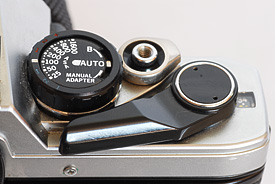
The ISO control also allows for exposure compensation. A small slider switch (partly hidden behind the film-advance lever) engages the bulb and manual settings.

Rotating a multi-position switch turns on the light meter, performs a battery check, and engages the self-timer.
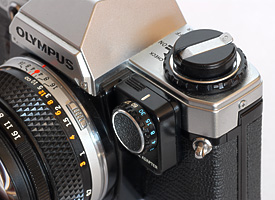
The addition of the accessory manual adapter gives the OM-10 the same functionality as its pro sibling, the OM-2.
The OM-10 is a manual focus, aperture-priority camera. That means, you’re in charge of focusing and choosing the aperture setting, and the camera figures out what the shutter speed should be. Of the various automatic modes, I find aperture priority the most useful. That’s because I usually don’t care about the shutter speed so long as it’s not so slow that I need a tripod to avoid image blurring. What I do care about though is depth of field, which is selected by changing the aperture of the lens. You might have a different preference, but this is mine.
In the field, the OM-10 is a lot of fun. Equipped with a 50mm f/1.8 lens, the OM-10 weighs in at 606 grams (21 ounces), which makes it one of the lightest SLRs in my collection. This is also one area where the OM-10 has an advantage over the “professional” OMs — it’s a full 100 grams lighter than the OM-2. I also find is that because OM-10s are so inexpensive and readily available, I don’t handle it with kid gloves like I do some of my other SLRs. If it suffers some misfortune, well, I figure there’s always another one out there somewhere with my name on it.
One feature that drives people towards the other (more expensive) OMs is the OM-10’s lack of a manual mode. Some photographers just feel naked without this — and it’s certainly true that in difficult lighting situations, manual control is very handy. But the great thing about the OM-10 is that you actually can have manual control, thanks to a nifty plug-in adapter. So equipped, the OM-10 is the functional equivalent of the highly regarded OM-2, albeit with a little more fussing.
Firing the shutter of the OM-10, one becomes aware of one place where cost-cutting manifests itself. The OM-10 doesn’t have the elaborate dampening system found on the professional OM cameras, so releasing the shutter on an OM-10 creates a lot more noise than with an OM-2. That said, you can’t really call any SLR “quiet.” I wouldn’t use one in a theatre or any place where stealth is important. It’s also true that the OM-10 has a lot more kick-back when the shutter fires, so a tripod is likely to become necessary at faster shutter speeds than with an OM-2.
On the plus side of the ledger, the OM-10 has one important feature that the OM-2 lacks. When you engage the self timer on the OM-10, the viewfinder mirror flips up as soon as you press the shutter release. By the time the shutter actually fires (12 seconds later), the “mirror-slap” vibrations have died off. I’m not sure why this wasn’t implemented in the OM-2, except possibly Olympus felt the dampening system in the OM-2 was so good that it wasn’t necessary. In any case, this is a feature I use often and for me at least, is one reason to choose the OM-10 over the OM-2. It also saves me the bother of having to remember to carry around a cable release.
If you’re looking for a good quality, lightweight SLR, the OM-10 is worth serious consideration. Like all OM cameras, the OM-10 gives you to access a breathtaking array of Zuiko and 3rd-party lenses, as well as a host of interesting and useful accessories. And if you decide to step up to an OM-2 later, you can continue to use all your lenses and the OM-10 can serve as a capable second body. But you might just find the OM-10 is so good that you never feel the need to “upgrade.”

Sunrise at Tower Point Regional Park.
(Camera: Olympus OM-10; Lens: Olympus Zuiko 28mm f/3.5; Film: Kodak Ektar 100)

Winter weeds, Penticton, B.C.
(Camera: Olympus OM-10; Lens: Olympus Zuiko 50mm f/1.8; Film: Kodak Ektar 100)
Did you find this article interesting or helpful? If so, consider using this link the next time you shop at Amazon.com. Better yet, bookmark it for future use. Thanks to Amazon’s associates program, doing so costs you nothing yet helps keep this site up and running. Thanks!
For more of my camera reviews, click here.


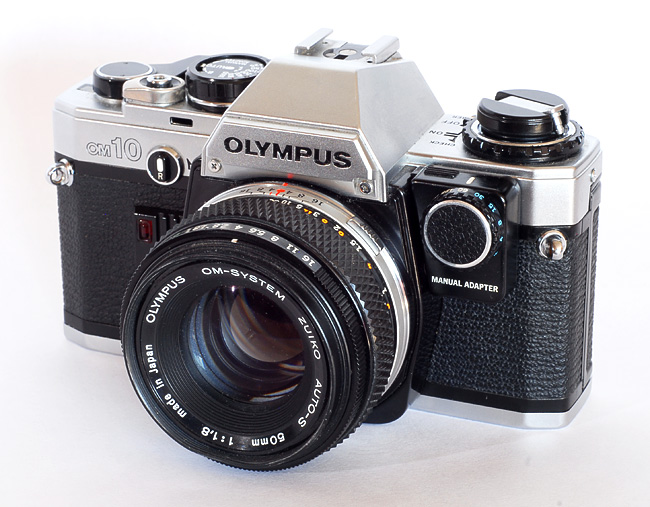

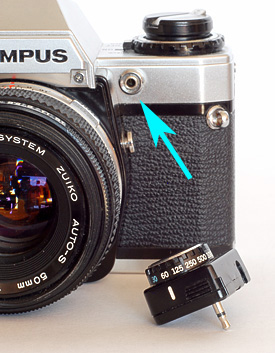
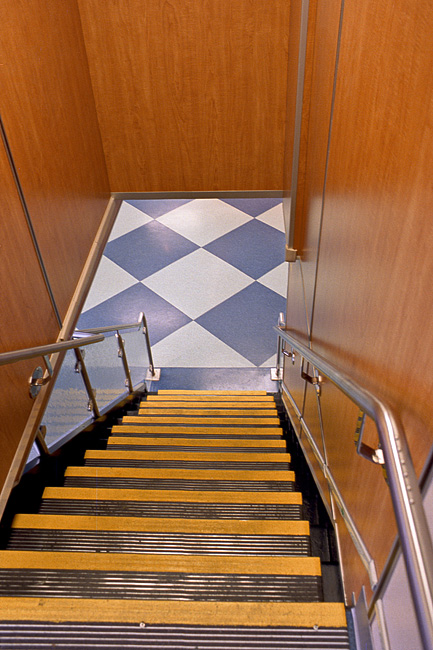
 Subscribe with RSS
Subscribe with RSS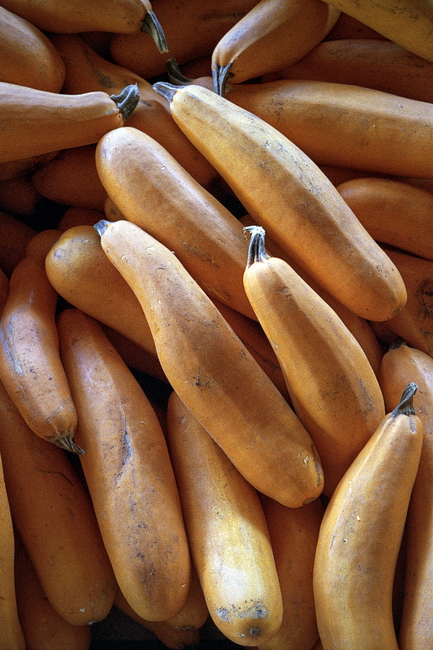
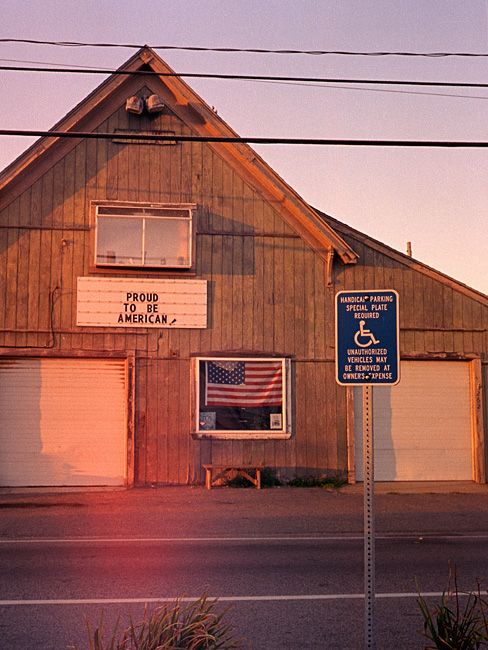
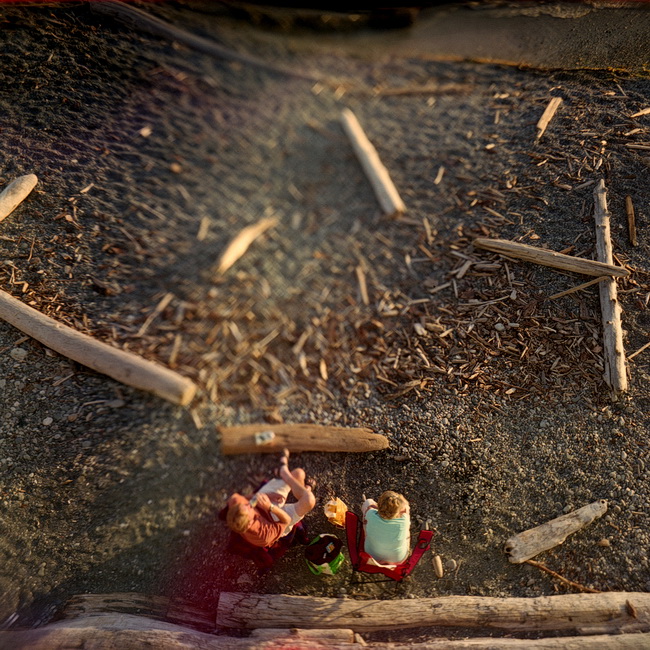
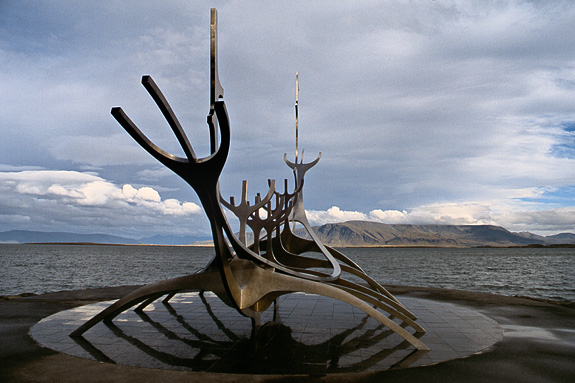
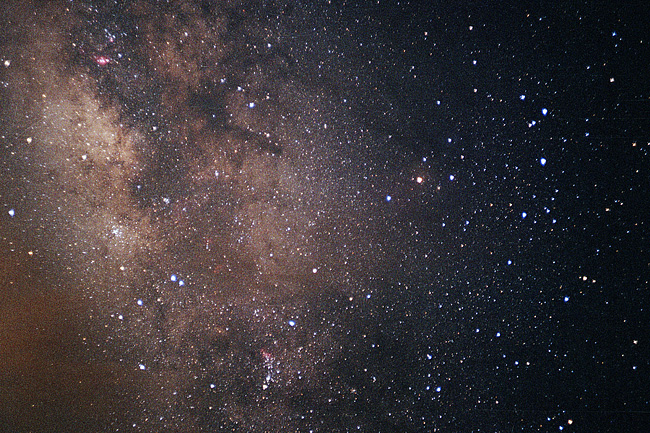

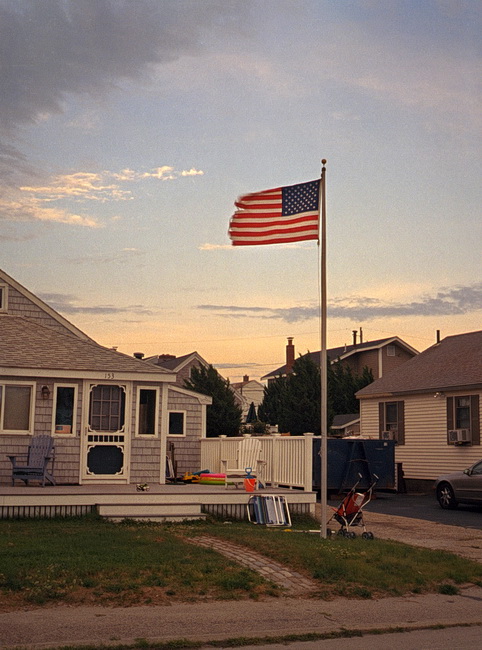
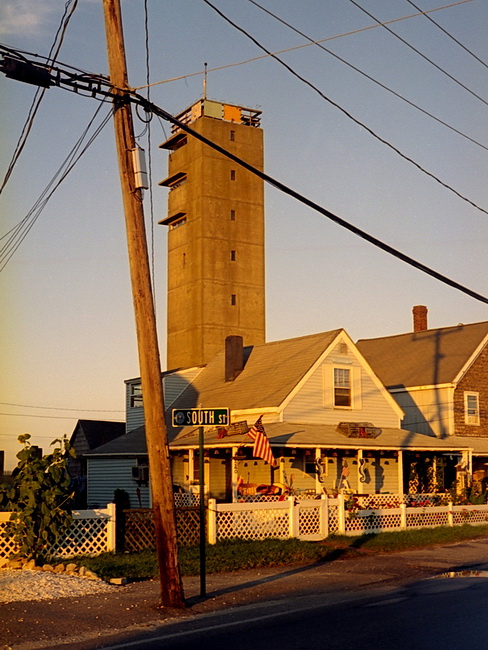
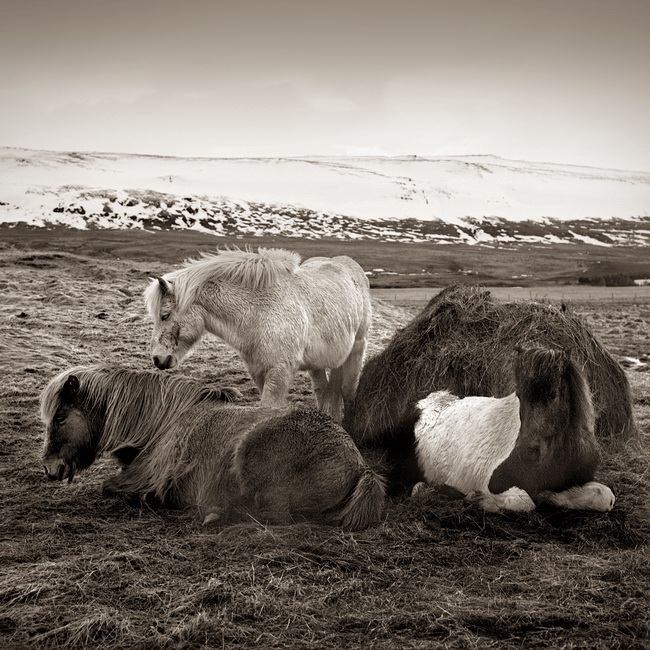

greetings,
I am a proud owner and user of the OM 10 as well as an OM 1 in black /winder 2.
I am using the 10 more often !!! I like it.
Not as noisy when mounted on the winder 2, as if it tightens things up….
Will be getting another OM 10 on the bay shortly, black !
Easy to find and cost effective !
Nice shots by the way…..
Cheers !
MC
Thank you very much. I’m just learning about photography now and maybe studying it at college later this year. Wasn’t too convinced on which camera to buy until reading this
Great article – thank you! I have just purchased this camera and I’m really excited to get out there and take some photographs.
Great article, and its awesome that you have a blog about your analog adventures! I just found one OM-10 straight out of the box in mint condition with 2 lenses! I think I’m gonna give it a shot 🙂
Thanks for the OM-10 details and backround. Just recently purhased the OM-1 (my first camera “back-in-the-day”), and looking for a second to have for Color or B&W film options.
Seems it’s hard to find OM-10 with the adapter still on. And tough to find adapters? But if even w/o it, seems fine to shoot in A-Priority (the way I usually shoot- as you say). I love the Olympus cameras and am now returned as OLY only owner (xz-1 & EPL-1)
Thanks for your observations, which mirror my own. My 9-year-old daughter is about to become the fourth family member/friend to learn 35mm photography with an OM10, left to her in an uncle’s will. I have used an OM2 since 1982, toting it in a handlebar bag while cycling through Brittany & Normandy one summer; returning to Switzerland (a memory: I have a photo of two tourists whose Canon froze on the Jungfraujoch in the Alps Christmas Eve day); traveling to Greece the next summer where I photographed the Acropolis on Independence Day: the birthplace of democracy on the birthday of the greatest democracy that’s ever existed. I plan to take Josie & her OM10 cycling through Eire when she’s 13.
Thanks for the excellent story John!
Gary
I love the interchangeability between OMs 2 & 10.
We plan to share lenses until Josie knows what she wants, keeping only Zuiko 50mms–1.8 for her; 1.4 for me–as dedicated gear.
I’m deciding which of these two lenses to keep and which to sell: Kiron 30–80, 3.5; and, Vivitar Series 1 28–90, 2.8.
Any input to go along with the obvious (ie, shoot some film)?
Hi John:
I’m not familiar with the Kiron and Vivitar lenses. In general, I prefer to use the Zuiko primes over zoom lenses — especially since they can be had for relavitely little money. My basic Zuiko kit consists of the 24mm f/2.8 (though I have the 28mm f/3.5 too), 50mm f/1.8 and 50mm f/3.5 macro, and 135mm f/3.5. All these lenses have the same 49mm filter size, which is a great convienince. I get the most use out of the 50mm f/1.8 though.
Gary
Thanks. Jim also left Zuiko 24 and 200 mm lenses; I’m thinking that using these–along with the 50–will be the easiest/best way for Josie to learn: they provide a nice range of wide/normal/telephoto.
I appreciate your consideration.
I have an OM-10 that I’ve just pulled out of the loft to start using (not being able to afford a digital SLR). I always thought it was a good camera but never really got the use out of it that it deserved to have. Something I intend to rectify/
The only thing I’m not sure of is the tripod adapter. With it being such an old camera will any tripod fit, or does it have a specific adapter size? I’d hate to go out and spend money on something that would need to go straight onto ebay without a single use from it.
Cheers
Hi Phil:
The OM-10 will attach to any tripod with a standard 1/4-20 thread, without and adapter.
Gary
Some nice OM camera love on here! As a long time owner of an OM-1, I’ve today picked up an OM10 body on Ebay for £5.50 + postage, primarily to utilise the Aperture priority feature, which I use on my Yashica Electro 35’s and my Olympus XA rangefinders. I also use digital SLR when I want to use images quickly, and via a mount adapter I can also use my Olympus lenses, but the actual physical size of my Canon DSLR, especially with a hefty lens, is just counterproductive, by comparison my Om-1 is tiny, has a massive viewfinder which makes focussing easy, and is very solid! As I intend to use it for street shooting, just having one less thing to worry about will make it a lot easier to capture fleeting moments.
I seem to be getting Olympus G.A.S. at the moment…..!!
Well, Olympus GAS is a less severe variety than the general GAS most of us come down with!
Pingback: Ein Geschenk, das mitten ins Herz traf… | RetroCamera.de
Hi John,
I own an OM-10 and am looking into buying an OM1. Are the lenses and the accessories compatible with each other?
Thanks.
Ps.: Great article
Yes, all the OM-series lenses that work with the OM-10 will work just as well on the OM-1 or other models in the OM line.
After a few decades, and following gentle persuasion from my 24 year old son who has recently used an old SLR during a trip to India, I have taken my OM-10, which I purchased new in 1982, out of its camera bag and have been using it this week during a trip up to Scotland. I’m looking forward to viewing the results upon my return home.
I own one of these cameras. I really like it since it’s quite small and quite light (compared to any Praktica aka the tank is so easy) and i like what i get.
I was wondering if you know any slr smaller or lighter. I’ve seen you’ve shown the OM-1 and the OM-2 as one of the smallest SLR.
Excellent information – many thanks!
I have inherited two of these through a family friend and glad to know they are good
I just picked up an OM10 and am loving it and the only real issue I’ve had so far is with the exposure meter auto turning off after a few minutes.
Does anyone know if when shooting aperture priority does the metering switch have to be turned on for AP to work or am I okay if it’s turned itself off?
I still own one of these, I bought it in 1984 before returning to the UK from Canada after 11 years. I bough a set of batteries for it and it fired, the manual adapter is a bit stiff but after a few days of use it’s back to normal. I also use the OM lenses on my DSLR using an adapter. Strangely I also have a Pressman f4, 80-200mm push-pul zoom lens which takes soem fantastic shots even on the DSLR.
I still have mine I bought in 1980. Don’t use it too much (recently bought a Canon DSLR to photograph my son’s wedding).
It’s sitting as a display item at the moment. Strangely enough though, getting a DSLR makes me want to go back to film on the om-10!
Enjoyed reading this article, just got my OM 10 down , after many years in drawer, case like new, and instruction book still with it, been using small Samsung ES55 for general photography, but my old OM10 pictures are exceptional so going to give it a try again, ordered film and batteries from Amazon tonight..
Your article brought back some great memories. I purchased my OM10 in Hong Kong in 1986, (had just turned 22). Knew nothing about camera’s or photography but lugged it and two surfboards through India, Sri Lanka, Malaysia, Thailand, Sumatra, Java and Bali. Got some fantastic shots and memories. Might dig it out again !!
Thx – Richard.
Pingback: Minolta X-300S review - Kosmo Foto
I bought an OM-10 new, around 1986 and used it extensively as a student. I used it for a lot of fairly rough travel and it survived with no issues and generally provided well exposed transparencies / slide film. I still think it a very good camera and more reliable than my OM2-SP that I bought later. When I went to Asia for 6 months, I took two OM-10s. The backup one was never needed.
A reliable AP Camera . Never understood how the manual adapter works. Any help please
Simple. Plug it in, put the selector switch on the top right of the camera to “Manual Adapter” and away you go.
Gary
Thanks for the review. I purchased my OM10 back in 1982. It was the second camera I had purchased after a trip35 which I still have in the original box with the receipt, purchased in 1976 for $50 Australian. I loved both cameras and they took very good shots considering I knew nothing about photography. The digital age came and both cameras have sat in the cupboard for approximately 25 years. I pulled out OM10 last night, found some old LR44 batteries equally as old and it fired up. Ì will be buying some film this month and quite batteries to relive what photography is all about. Composition. Film makes you think about the composition more, compared to digital where there is more of a tendency to look and shoot. I am really looking forward to it. I have the manual adapter on mine with the original strap. I am so glad I never sold them. Thanks again for the review, it brought back a lot memories and hopefully will create some more.
Great to hear Rick!
My wife just found my old OM10, bought in the UK around 1982. Unused for years after buying various DLSRs. Great article reminding me of the time I used to take getting the shot, not to waste the film. Now have thousands of prints to scan into the PC but many are so good to see again. DSLR certainly reduced the stress but maybe also the quality of the results. However, I would not go back to film. Apart from the cost, the sheer convenience of now having digital always in my pocket with my iPhone makes going back not a serious consideration. Great to reminisce though.
In response to Tom above, your story sounds incredibly similar to mine this weekend! I bought my OM-10 on Tottenham Court Road in London in 1983. It was an (excellent!) emergency replacement for my Minolta XG7, whose shutter had broken while taking my first shot inside the Palm House at Kew Gardens: the Palm House had been emptied of plants for maintenance, and I was a young architecture student on my way to a term in Rome, so you can imagine my anger at missing this opportunity to snap pictures of the iron and glass work at Kew without those pesky plants around! My OM-10 travelled with me everywhere after that: never an issue, always comfortable. Anyways, yes, moved on to digital, and I now rely solely on my iPhone for snap shots. Just like Tom! I suppose neither of us is very original! 🙂 But the feel of the OM-10’s shutter clicking in my hands this weekend brings back great memories!!
In the early 80s, my sister had an OM10 with Zuiko 50/1.8, 28/2.8, and 135/3.5 lenses, and I always enjoyed using them. I actually sold her whole kit through a local app a couple of years ago – it was still working fine – someone got it at a steal at $50.
Regarding the lack of manual shutter speeds: if you truly understand how exposure works, it’s really easy to control both speed and aperture. When you’re shooting and you decide that the speed is more important than the aperture for a given shot… you just set the aperture until the meter sets that speed. Conversely, if the aperture is more important, set it for that and don’t worry about the speed (unless it’s too slow to handhold).
I ultimately bought myself Olympus’ follow-up camera, the OM-G (aka OM20), which was essentially the same with a couple of added tweaks, notably built-in manual shutter speed control without requiring the OM10’s Manual Adapter. (If you find a working OM-G/OM20, jump on it!) A few years later, a friend who worked in a camera shop GAVE ME an OM-2n and a Zuiko 24/2.8 someone had brought in!
Now mind you, I’m an old pre-AI Nikon guy – my parents were pros and I grew up on Nikons and Nikkormats – and I still shoot with that wonderful gear. But besides being lighter/smaller and ergonomically delightful, the OM cameras and Zuiko lenses are really fabulous shooters. The OM-2’s light meter on Auto produces entire rolls of perfectly exposed shots… I never even bother using its match-needle Manual mode.
The Zuiko OM lenses I use the most are the 35/2 and the fantastic 100/2.8. I can’t recommend that lens enough, it’s very similar to the justly famous Nikkor 105/2.5 (I’ve been using one of those since the 60s!)… but so much smaller and lighter.
For the record, I also have an Olympus Stylus Epic point & shoot and a Pen F half-frame SLR. Both are great shooters. You gotta love these gorgeous little Olympus cameras!
I used this camera,in the year 1978/79 and was quite satisfied,very sharp lenses.I loved it.